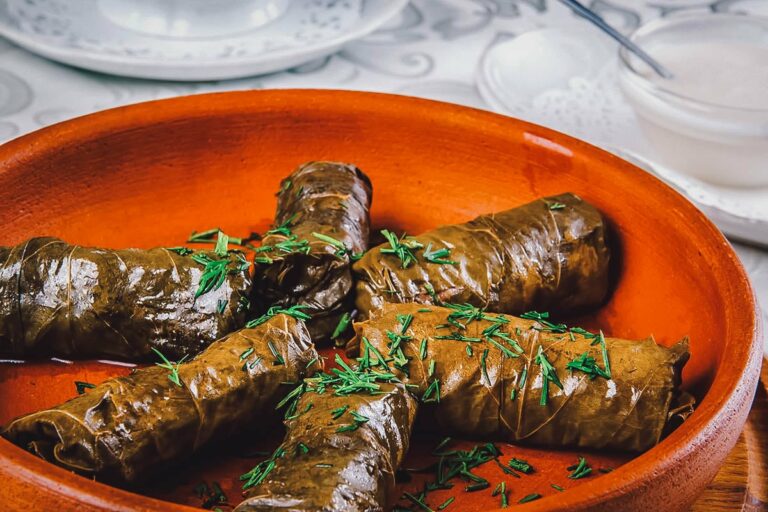Introduction: Armenian Cuisine
Armenian cuisine is a rich and diverse culinary tradition that has been passed down through generations for thousands of years. With a blend of Mediterranean and Middle Eastern flavors, Armenian cuisine offers a unique and flavorful experience. Many Armenian dishes are made with fresh and locally sourced ingredients, making it a healthy and sustainable cuisine.
An Ancient Culinary Tradition
Armenian cuisine dates back to ancient times, with evidence of cooking techniques and recipes found in archaeological sites and manuscripts. The cuisine has been influenced by Armenian history and migration, from the Ottoman Empire to the Soviet Union. Traditional Armenian dishes were usually made with simple ingredients such as meat, vegetables, and grains, and were cooked using open fire or clay ovens.
The Influence of Geography and History
The geography and history of Armenia have played a significant role in shaping its cuisine. The country’s location in the Caucasus region, surrounded by Iran, Turkey, Georgia, and Azerbaijan, has led to a blend of flavors from various cultures. The influence of the Ottoman Empire brought kebabs and pilaf, while the Persian influence can be seen in the use of dried fruits and nuts. The Soviet era introduced a new set of dishes, including salads and soups.
The Role of Herbs and Spices
Herbs and spices play a vital role in Armenian cuisine, adding depth and complexity to dishes. Some of the most commonly used herbs include mint, parsley, dill, and cilantro. Spices such as cumin, coriander, and paprika add a touch of heat and smokiness to dishes like khorovats (barbecue) and dolma (stuffed vegetables).
From Lavash to Khorovats: Popular Dishes
Armenian cuisine offers a variety of delicious dishes, from the traditional flatbread lavash to the hearty meat dish khorovats. Other popular dishes include dolma, a stuffed vegetable dish, and khash, a soup made with cow’s feet. Armenian cuisine also has a range of vegetarian and vegan options, including lentil soup, eggplant casserole, and spinach pie.
The Importance of Dairy Products
Dairy plays an essential role in Armenian cuisine, with yogurt, cheese, and sour cream used in many dishes. Matzoon, a creamy and tangy yogurt, is a staple in Armenian cuisine, used in soups, sauces, and dips. Cheeses like string cheese and feta are also commonly used in dishes like dolma and salads.
Sweets and Desserts: The Armenian Sweet Tooth
Armenians have a sweet tooth, and their desserts are a testament to this. Baklava, a pastry made with layers of phyllo dough and honey, is a popular dessert in Armenian cuisine. Another favorite is gata, a sweet bread filled with a mixture of sugar and butter. Armenians also enjoy a range of fruit-based desserts, including dried fruit compotes and apricot jam.
Conclusion: A Rich and Diverse Cuisine
Armenian cuisine is a unique and flavorful culinary tradition that has been passed down through generations for thousands of years. From the influence of geography and history to the use of herbs and spices, Armenian cuisine offers a diverse range of dishes that are both healthy and delicious. Whether it’s lavash or khorovats, matzoon or baklava, Armenian cuisine has something to offer everyone.

